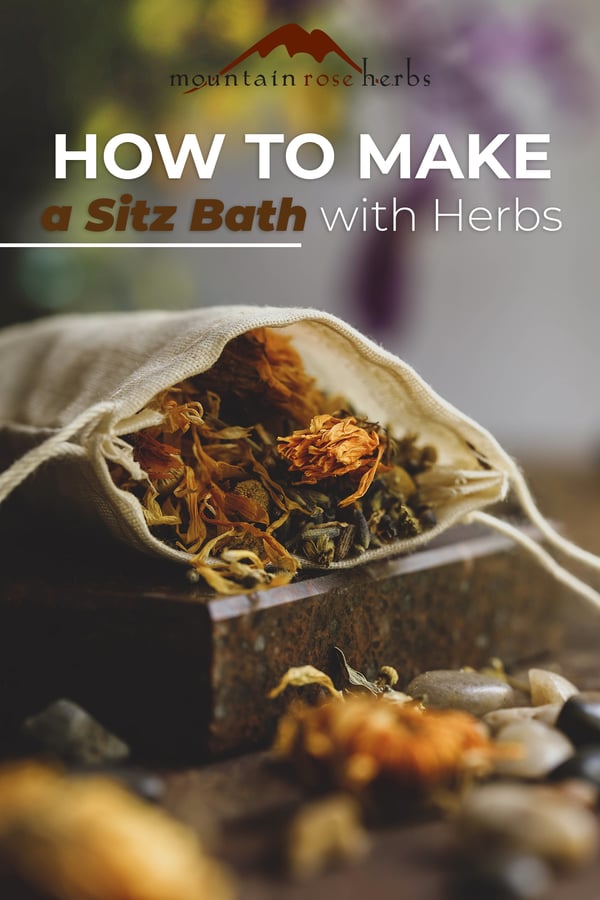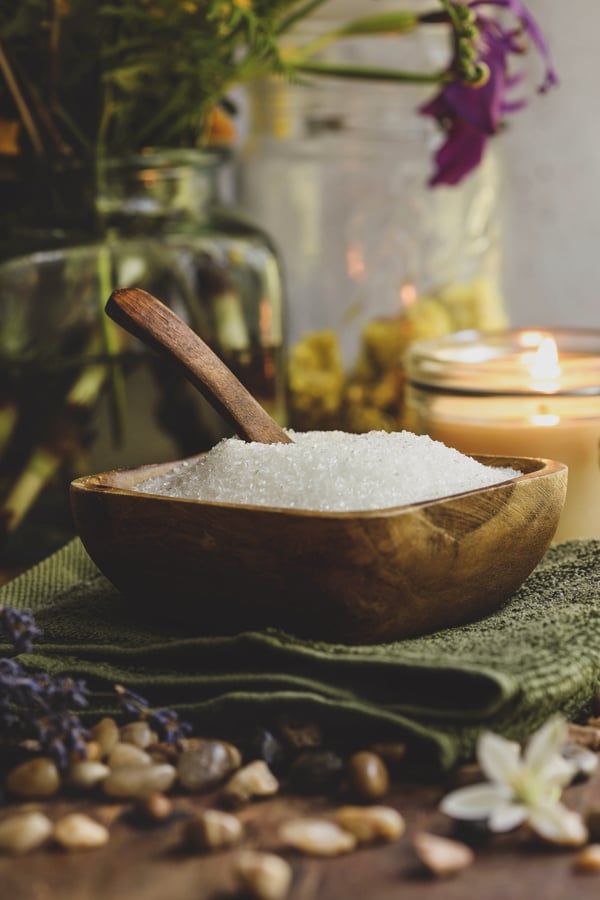When I was a child, I was thrown from a horse and spent many years thereafter challenged by lower back and radiating leg pain. With time and maturity, as well as changes in my diet and appropriate exercise, I’ve put those pain-days behind me, but I’ve carried forward some of the best solutions that I learned from the experience. One of my favorites of these is the soothing comfort of an old-fashioned herbal sitz bath. Often used to relieve issues related to post-birth discomfort, etc., a sitz bath is also ideal for easing general lower-body soreness and fatigue.
What is a Sitz Bath?
A sitz bath is a shallow bath in which you can add salts, herbs, and other ingredients to create a clean, warm, healing pool in which to sit. There are small tubs made specifically for this purpose, which are ideal for concentrating the salts and herbs where you need them most. However, when dealing with pain and fatigue that impacts the lower back and legs, a bathtub is the appropriate vessel.
The word “sitz” is from the German “sitzen”—no surprise, it means “to sit.” There are other names for these short, soothing baths as well. My grandparents, for instance, prescribed taking a “hip bath” (water only up to the hips). I’ve also heard people call them a “salt soak,” which makes sense because salts, particularly Epsom salt, are a ubiquitous ingredient in these little baths.
What is it about Epsom Salt?
Epsom salt is magnesium sulfate, a chemical compound made up of magnesium, sulfur, and oxygen—in other words, human health essentials. Magnesium sulfate is readily absorbed through the skin, so a sitz bath is a perfect way to get the best benefits of this naturally occurring mineral compound that is known for promoting relaxation of the muscles as well as increased circulation in the soaking area. It can be used as a stand-alone salt for soaking or blended with supportive botanicals, other salts, baking soda, etc. to enhance the experience.
What to Add to a Sitz Bath
I make sitz baths much the way my grandparents did, with Epsom salt and baking soda, as well as whatever skin- and muscle-soothing herbs are appropriate for the occasion: often lavender, calendula, and comfrey, and sometimes additions like oatmeal for extra skin pampering. I also like St. John’s wort and arnica flowers when I’m achy, and ginger when I’m feeling a little under the weather and need to warm up. In Ayurvedic tradition, you may see “warmer” herbs and spices like mustard powder included to stimulate skin circulation and rejuvenate tired muscles.
Herbs to Use for a Bath Soak (dried, powdered, or chopped fresh)
- Arnica flowers
- Calendula flowers
- Chamomile flowers
- Comfrey leaf
- Eucalyptus leaf
- Ginger root, ground
- Juniper berries
- Lavender
- Mints
- Mustard, ground
- Rosemary leaf
- Sage leaf
- St. John’s wort
- Turmeric root, ground
How to Make an Herbal Sitz Bath in the Bathtub
Ingredients
- 1 to 2 cups Epsom salt per gallon of water, depending on skin sensitivity
- 1/2 to 3/4 cup baking soda per gallon of water
- Up to 1 cup other salts like Himalayan Pink Salt, optional
- Cotton tea net or muslin bag full of organic herbs of choice (approximately 1/2 cup)
Directions
- Thoroughly scrub your bathtub and rinse it well so there is no soap residue.
- Adjust water temperature so that it is warm enough to dissolve salt but is not uncomfortably hot.
- Fill tub with just enough warm water so it will just cover your hips when you sit down. Do not add other oils or soaps.
- Add Epsom salt, baking soda, optional additional salts, and bag of herbs. Agitate as necessary to dissolve salts and baking powder, and to encourage herbal goodness to seep into the bath. Alternatively, hang herb bag on the drain so the water runs over it as the tub fills.
- Climb in and soak for 15-20 minutes, making sure to keep the most affected areas of your lower body in the water.
- Rinse off the salts in fresh water. Gently pat yourself dry.
- Repeat up to 3-4 times a day, as needed for relief.
Pro Tips
- If you need to fill the tub a little deeper to reach your lower back, adjust amount of Epsom salt, baking soda, and herbs accordingly for more water.
- You can put herbs directly into your bath water but cleaning them out again can be a pain in your just-soaked backside. A tea net or muslin bag makes cleanup a breeze. If you are using powdered herbs, you’ll need to use a muslin bag.
- Remember to rinse the tub after your sitz bath so you don’t leave salt behind for the next person.
Want to learn more about herbal soaks?
Learn How to Make a Mustard Bath Herbal Soak
You May Also Enjoy:
- Making Herbal Bath Salts, Oils & Tea Soaks
- Bath Bomb Recipe with Lavender
- DIY Eucalyptus Shower Bombs














